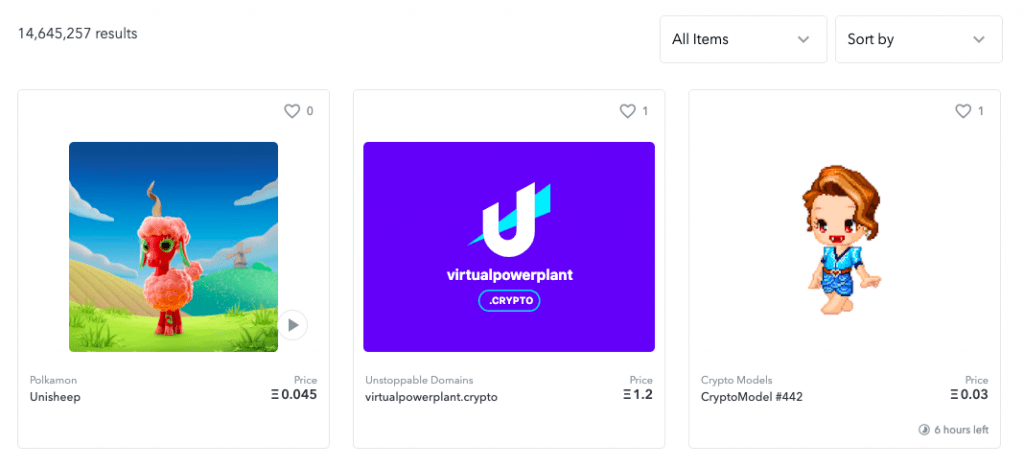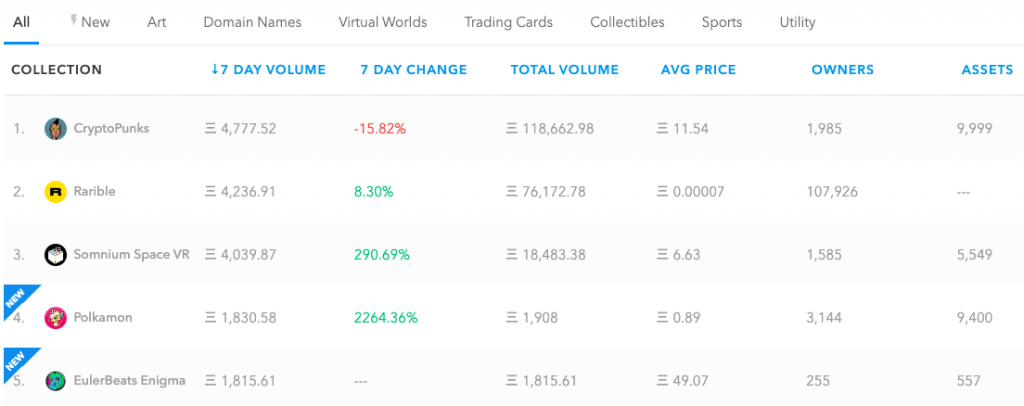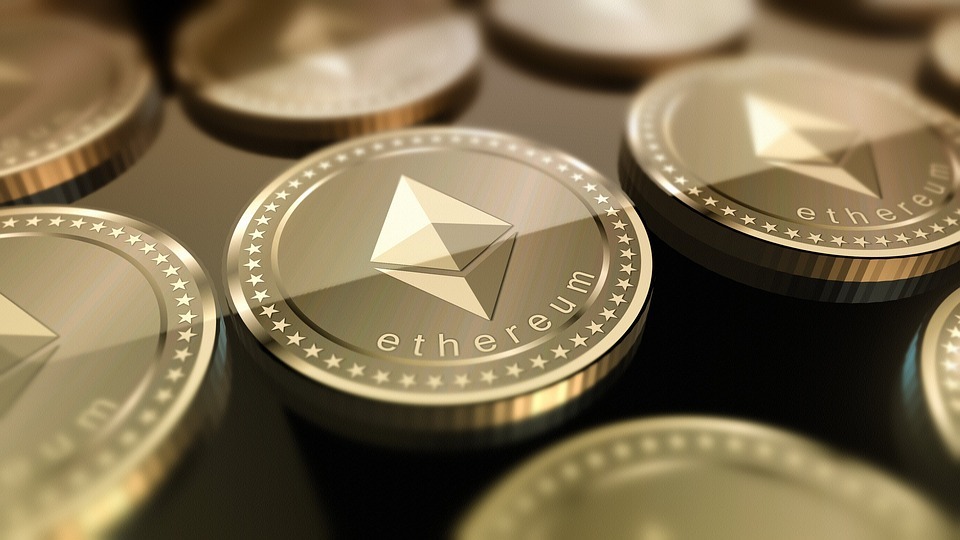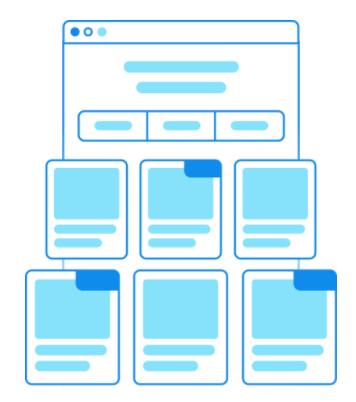OpenSea Review 2025
OpenSea.io is the largest marketplace for trading digital assets. Clients can buy, sell and create crypto collectibles and non-fungible tokens (NFTs) like SuperFarm game cards or land parcels from the Sandbox collection. Developers can also make use of the API and SDK provided. Our review covers the key aspects of the OpenSea platform and gives a tutorial on how to buy and sell tokens, including minting and setting a reserve price. Login now and start your NFT trading journey.

About OpenSea
OpenSea is a peer-to-peer NFT marketplace with a recognisable sailboat logo, based in NYC. It was launched in 2017 and is currently headed by co-founder and CEO Devin Finzer. The platform allows users to create and trade NFTs, which are digital goods such as art, music, or gaming items.
Individuals who want to invest in a digital asset on OpenSea have to pay using blockchain-based cryptocurrency. The platform supports the use of Ether (ETH), DAI and USDC, though some communities or projects have dedicated tokens. These funds and assets are stored in a crypto wallet, a tool that allows investors to interact with the blockchain. Wallet extensions like MetaMask can be installed for desktop browsers while mobile users should choose an Ethereum-compatible solution like Coinbase Wallet or Opera Touch.

Marketplace
Some assets on OpenSea are advertised token airdrops. These ‘drops’ are usually marketing schemes in which new crypto coins are sent to a number of wallet addresses to raise awareness and increase ownership. Traders may also receive airdrops for buying certain tokens, for example, a project was recently launched in which users that bought the Yumiko NFT were rewarded with a RARI airdrop.
Tradable NFTs
OpenSea has over 4 million user-owned items for sale across 200 categories. Users can explore the top NFTs using the Rankings tab, a page that provides volumes, averages, token prices, and market cap statistics with hourly updates.

Rankings
Some high-profile OpenSea collections display blue verification ticks. This is because these assets are likely to have fakes elsewhere in the market, so these marks indicate that the collection is legitimate. Users should exercise extra caution when buying an item with a red warning icon – these assets are usually part of an unapproved collection that haven’t been verified by OpenSea.
The OpenSea marketplace has an extensive range of gaming assets, including NFTs on:
- Gods Unchained
- NBA Top Shot
- Knight Story
- Zed Run
OpenSea also has a huge collection of digital art, including NFTs on:
- Boss Logic x Ethernity
- JOYWORLD JOYS
- Hashmasks
- WAX ART
- Waifusion
- 3D punks
- Beeple
- Flow
- Zora

Digital art
OpenSea users can also trade domain names, using marketplaces like the Ethereum Name Service (ENS) and Decentraland Names. Decentraland is a platform where individuals can purchase parcels of land in a virtual reality world, where each plot is an NFT. OpenSea traders can also purchase land NFTs for the virtual reality world Somnium Space.
Additionally, OpenSea hosts a marketplace for buying Urbit IDs, which are short addresses that connect and identify users on Urbit OS. The Unisocks marketplace meanwhile allows traders to buy tokens that they can either be redeemed for a real pair of limited edition socks or sold back at any time.
OpenSea members can view and trade NFTs based on Tezos, an open source blockchain platform for peer-to-peer transactions. Customers can also buy online courses as NFTs, for example, how to launch a successful initial coin offering (ICO).
Several celebrities have recently launched marketplaces on OpenSea – Logan Paul has a successful digital collectibles store and Justin Kan sells his stories as NFTs. Musicians like Kings of Leon also collaborate to produce these items.
OpenSea users can purchase NFTs on Matic, a marketplace that provides scalable and instant blockchain transactions. This platform is not yet directly integrated into the core OpenSea marketplace. Users can also buy governance tokens, which allow the holder to influence future blockchain project decisions by providing voting power.
This platform recently began offering ERC 1155 items, a new type of digital asset that is semi-fungible, unlike NFTs. This is a new Ethereum token standard with more flexibility and efficiency.
Fees
OpenSea charges a flat commission of 2.5% on each sale. The platform allows sellers to set their own percentage fee on their items – this means fees can be levied on the seller or the buyer. However, they recommend a seller fee of 2.5% or less. OpenSea also sends out royalties or ‘secondary fees’ to the original creators of NFTs when they are sold again. This is done on a fortnightly basis.
OpenSea users are also subject to gas fees – these are essentially transaction costs for using the Ethereum blockchain and are not set by the platform. Creating NFTs does not cost anything, however you’ll have to pay a one-time listing gas fee the first time you sell to initialize your account. There are additional fees if you list in a currency other than Ether.
OpenSea sellers also have to pay gas for accepting offers, whereas buyers are charged for fixed-price listings. Overall the platform quotes a gas fee that fluctuates between $50 and $250 to get yourself set up for trading.
Deposits & Withdrawals
In order to make purchases and pay gas fees, traders must have a crypto wallet to store digital money and manage addresses. OpenSea recommends the MetaMask wallet, but there are many options like Fortmatic and Dapper depending on which features are important to you. After linking your wallet to your OpenSea account, you need to add funds.

Many OpenSea traders choose to use ETH for funding their account wallet. This currency is built on the Ethereum blockchain, which can be explored using the analytics platform Etherscan. Traders can buy ETH on an exchange like Coinbase or on Binance Smart Chain, but can also purchase it directly through MetaMask and some other wallets. Deposit times and fees depend on your chosen route. For withdrawal in fiat currency, you must move your crypto from the wallet back through an exchange.
Opening An OpenSea Account
Investors interested in OpenSea can sign up for an account on the website after they have registered for a wallet. Beginners may find it useful to read the Non-Fungible Token (NFT) Bible published by OpenSea at this point for useful trading tips and advice.
To generate a new page for selling NFTs in your collection, click ‘Create’ on the top banner of your account page, followed by ‘My Collections’. Each OpenSea page gets a personalised banner that account holders can upload – the dimensions should be around 1400 x 400. The size will look different on different devices, so it is best to avoid text.
To maintain user safety, be sure to logout when you have finished your trading session.
How To Sell NFTs
Once you have created a page to host your OpenSea collection, you are ready to start making or ‘minting’ NFTs. OpenSea offers free (gasless) minting, so this process will not incur transaction fees. Start by pressing the ‘Add New Item’ button, then upload metadata like the image or audio file. Many NFTs also include unlockable content, which is data or information that can only be viewed by the owner. For example, some Unique Stock artwork offers the original uncompressed files plus full rights to commercial use. Once all the information has been added, finalise your NFT by clicking ‘Create’.
To list your NFT for sale on OpenSea, press ‘Sell’ on the asset page for your item, then choose between a fixed-price, declining price or highest auction listing. You can also set a reserve price at this stage. Once complete, press ‘Post Your Listing’ to publish.

Note that previously, OpenSea would verify all collections before they appeared in the public search. This requirement to get verified has recently been rescinded. The platform has also added a delete function to the NFT minter, allowing creators to remove their item if it has not been sold, with no gas fee.
OpenSea users can embed any single NFT into their website by clicking the ‘Share’ button on the Items page, followed by ‘Embed Asset’ to get the necessary code.
Pros Of OpenSea
- Low fees – OpenSea offer some of the lowest fees in NFT trading, charging 2.5% of sales and no service fee. Alternative major marketplaces like Rarible or Mintable exact higher commissions.
- Customisable selling options – OpenSea NFT sellers have a choice of three listing types for their items and can also configure reserve prices and expiration dates. Traders can make offers on items that creators have not put up for sale – the NFT maker will only be alerted if the price is above their set threshold.
- No gas fee on highest-bid auctions – Sellers who use this ‘English auction’ listing type enjoy no ETH gas fees for the transaction – OpenSea will cover the transfer cost. Note sellers can accept the highest bid whenever they choose with this auction type.
- API and SDK offering – The marketplace has a free-to-use API for fetching assets. OpenSea also has a Rinkeby environment that allows developers to confirm that integration with the platform has been successful. The SDK offered by OpenSea allows developers to build a marketplace from scratch and integrate it into a game.
Cons Of OpenSea
- Anyone can mint and sell an NFT – OpenSea does not run an approval process for NFTs, unlike platforms like Nifty Gateway. Although this is beneficial for many new creators, buyers need to do extensive research to be sure the NFT they are purchasing is authentic and owned by the seller.
- No mobile app – OpenSea does not currently offer a mobile app, for either iOS or Android. Customers are restricted to trading NFTs via their browser, which limits ease of use and the flexibility found with an app.
OpenSea Support
OpenSea users can access support and technical help through the ‘Guide’ and FAQ pages plus the ‘docs’ domains. These pages explain the complicated concepts around NFTs and full terms for using the service. Customers can contact the platform services directly through Discord. The marketplace also has X, LinkedIn and Instagram pages where users can stay up to date with news and offerings.
OpenSea Verdict
OpenSea is the largest NFT and crypto asset marketplace in operation. The platform offers over four million items, alongside low selling fees and gasless minting. OpenSea also provides a free API and SDK to developers and a variety of auction options to suit all sellers. Both NFT traders and creators will be satisfied with the wide range of markets and rapid creation process.
FAQ
How Do I Mint On OpenSea?
OpenSea users enjoy free minting on the platform. Creators can upload the metadata for their item on the collections page and add additional details like unlockable content before publishing.
How Do I Sell On OpenSea?
After members create an NFT, they can list it with fixed-price, declining-price or auction bidding. Sellers can also accept offers for NFTs that aren’t put up for sale.
What Can I Buy On OpenSea?
The marketplace has over 200 categories of NFTs and crypto collectibles. This includes SuperFarm and Gods Unchained cards plus artwork and music.
How Much Does OpenSea Cost?
OpenSea takes a fee of 2.5% from all sales. They do not charge additional commissions for services and sellers can set their own fees for item sales.
How Do I Deposit At OpenSea?
Users should connect their crypto wallet (e.g. MetaMask) to their OpenSea account, and fund it with Ethereum (ETH). These funds can be used for purchasing NFTs and paying gas fees.
